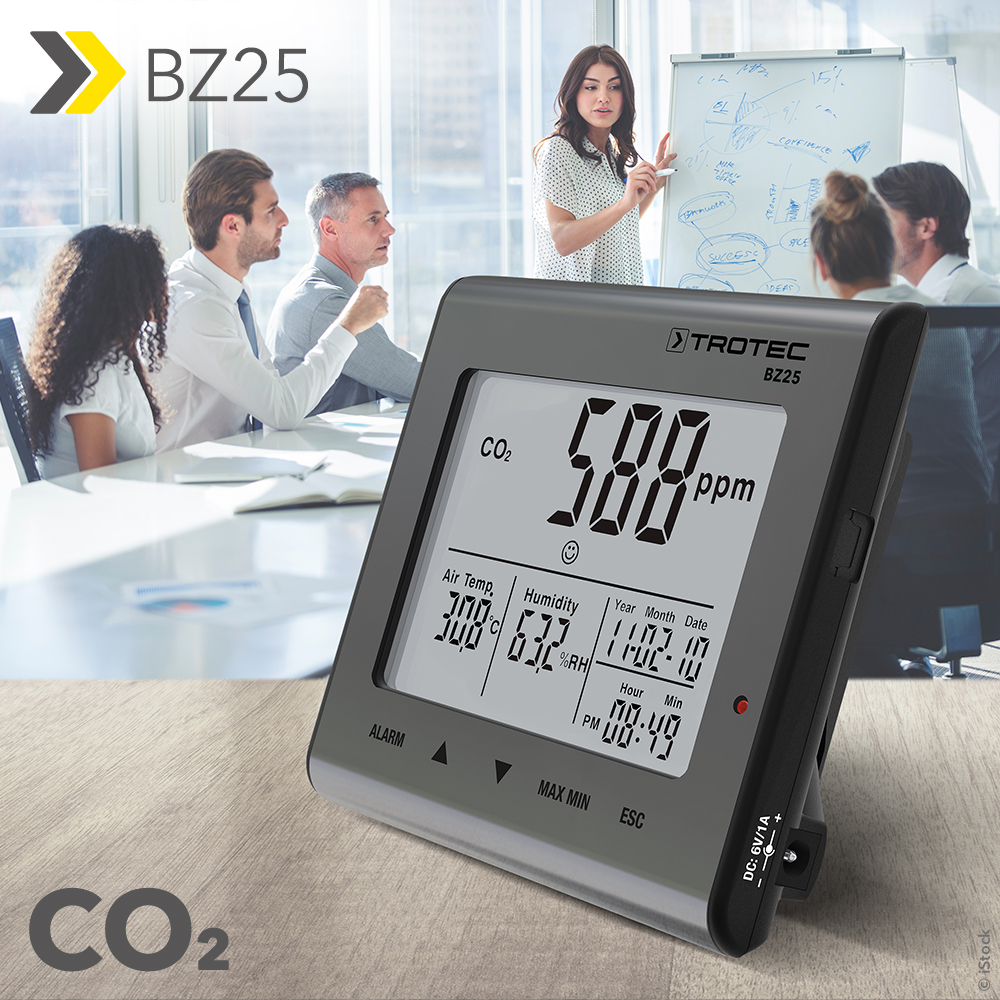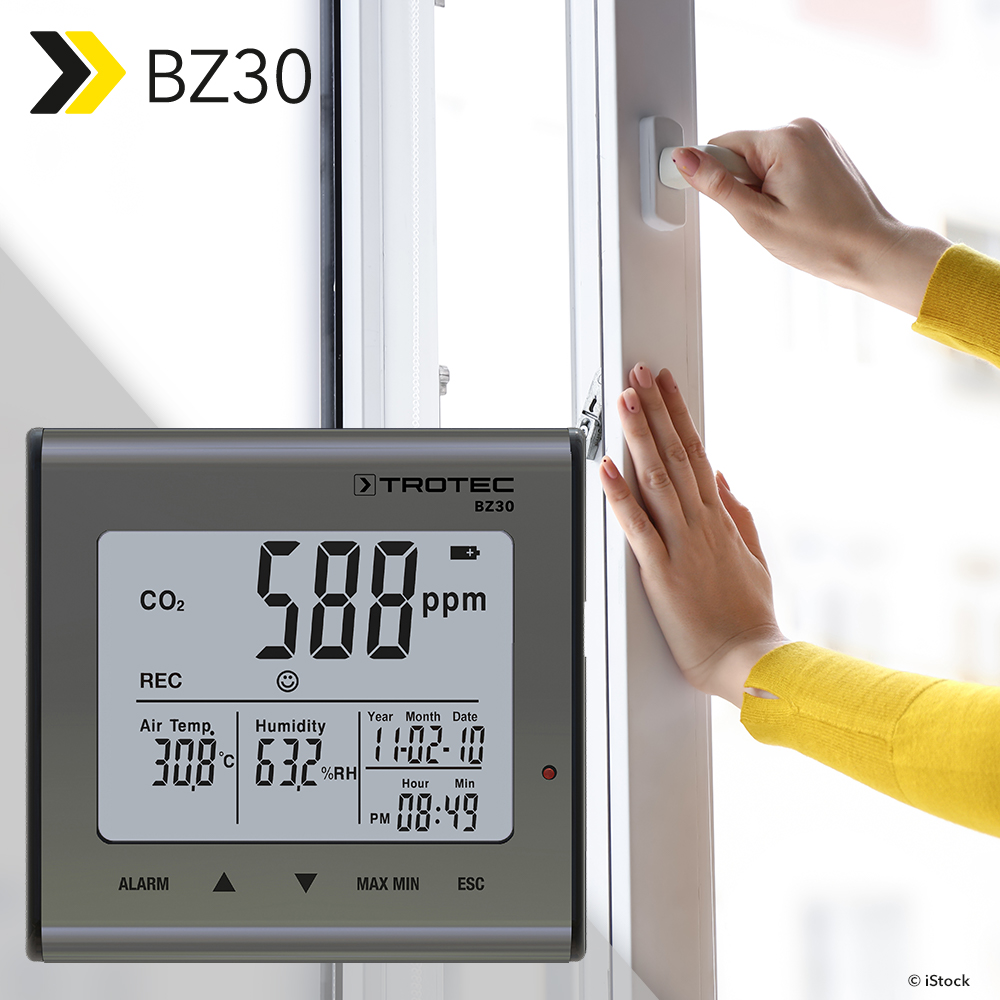 Rarely has there been so much talk about ‘ventilation’ as in the past and current year. No wonder, since the exchange of air in rooms was and still is considered a tried and tested means against potential corona virus load caused by infectious aerosols. So far, there is no measuring device that is able to prove the contamination of indoor air by SARS-CoV-2. However, it is possible to determine a necessary ventilation interval via the ‘detour’ of a permanent measurement of CO2 values. Because the more people are in living rooms, office spaces, production rooms, schools and daycare centres, the more the exhaled carbon dioxide level increases – to the point of a CO2 alarm: time to open all the windows!
Rarely has there been so much talk about ‘ventilation’ as in the past and current year. No wonder, since the exchange of air in rooms was and still is considered a tried and tested means against potential corona virus load caused by infectious aerosols. So far, there is no measuring device that is able to prove the contamination of indoor air by SARS-CoV-2. However, it is possible to determine a necessary ventilation interval via the ‘detour’ of a permanent measurement of CO2 values. Because the more people are in living rooms, office spaces, production rooms, schools and daycare centres, the more the exhaled carbon dioxide level increases – to the point of a CO2 alarm: time to open all the windows! Increased carbon dioxide concentrations can lead to fatigue, poor concentration and loss of performance. In addition, they are a warning of possibly inadequate ventilation management, which always means a potentially increased risk of infection during corona times. With the BZ25, indoor air quality can be monitored reliably and particularly easily, because the air quality monitor has a symbol display for good, normal or poor carbon dioxide concentration. Ideal for use in offices, living- and children’s -rooms, classrooms, kindergartens and production environments.
Increased carbon dioxide concentrations can lead to fatigue, poor concentration and loss of performance. In addition, they are a warning of possibly inadequate ventilation management, which always means a potentially increased risk of infection during corona times. With the BZ25, indoor air quality can be monitored reliably and particularly easily, because the air quality monitor has a symbol display for good, normal or poor carbon dioxide concentration. Ideal for use in offices, living- and children’s -rooms, classrooms, kindergartens and production environments. Pandemic and infection alarms are going off everywhere you look – how often can, should or must classrooms, waiting rooms and meeting rooms be ventilated? An recommendation often heard is about every 20 minutes. But is that really enough? Is that too little ventilation, too much or just right? The BZ30 CO₂ air quality data logger delivers clarity here, because its alarm function warns you if it detects an increased concentration of CO₂. Schools, offices and private households thereby receive an indication of potentially inadequate ventilation management, which brings with it a potentially increased risk of infection.
Pandemic and infection alarms are going off everywhere you look – how often can, should or must classrooms, waiting rooms and meeting rooms be ventilated? An recommendation often heard is about every 20 minutes. But is that really enough? Is that too little ventilation, too much or just right? The BZ30 CO₂ air quality data logger delivers clarity here, because its alarm function warns you if it detects an increased concentration of CO₂. Schools, offices and private households thereby receive an indication of potentially inadequate ventilation management, which brings with it a potentially increased risk of infection.